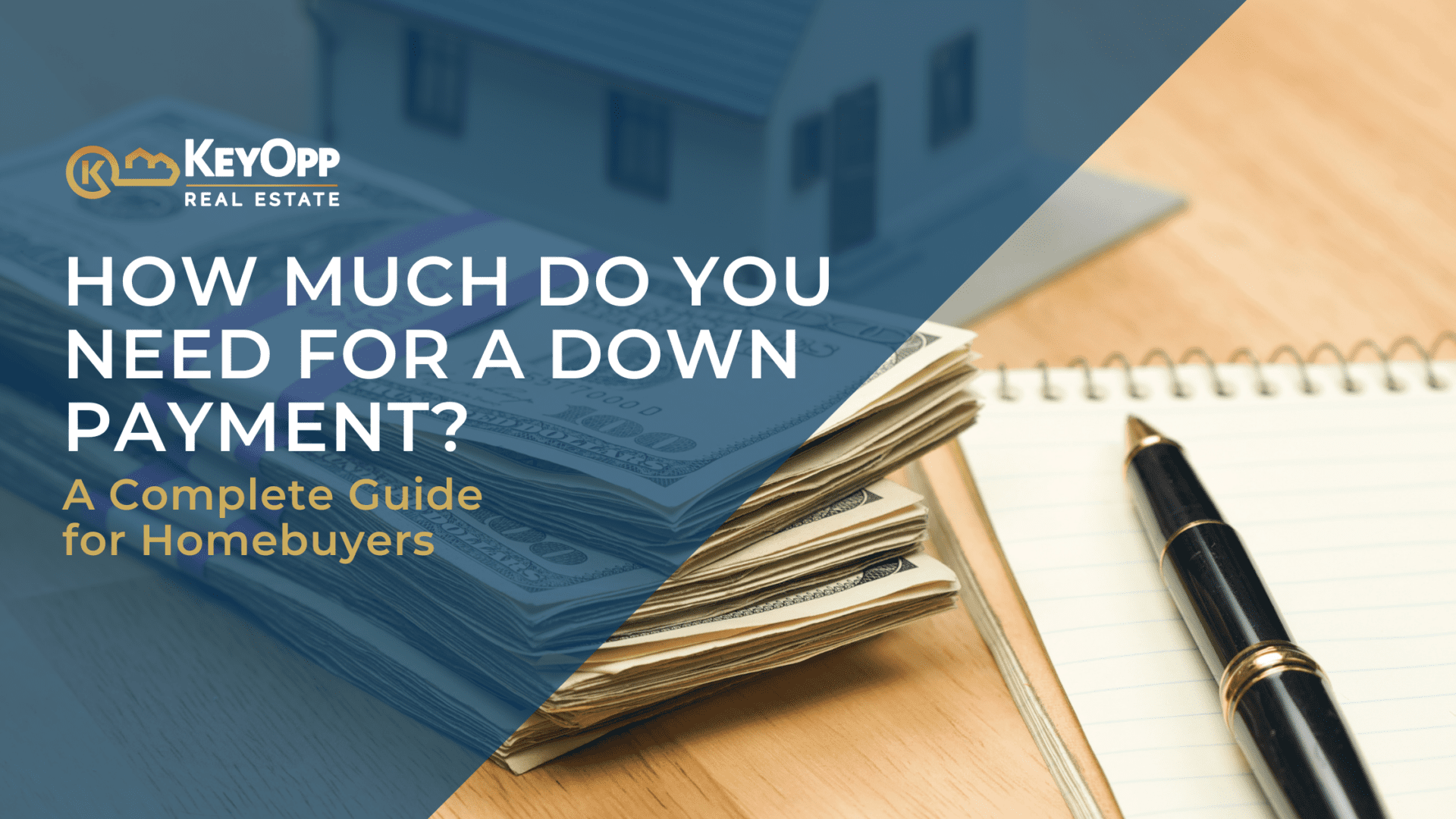
Many people believe you need a 20% down payment to buy a home. While putting down 20% helps you avoid private mortgage insurance (PMI) and secures better loan terms, it’s not always required.

What Is PMI?
PMI, or private mortgage insurance, is required when you put down less than 20%. It protects the lender if you default on your loan. PMI costs typically range from 0.5% to 1% of your total loan amount annually.
However, once you reach 20% equity in your home through payments or market appreciation, you can remove PMI and lower your monthly mortgage costs.
Minimum Down Payment Requirements
If you don’t have 20% saved, there are other options:
- Conventional loans: Require as little as 5% down.
- FHA loans: Allow first-time buyers to put down just 3.5%.
- VA loans: Available to eligible military service members and veterans with 0% down.
- USDA loans: Offer 0% down for eligible rural homebuyers.
- Down payment assistance programs: Many state and local programs provide financial help to first-time buyers.
- BMR (Below Market Rate) properties: Reserved for lower-income buyers, these homes offer a more affordable path to ownership.

Buying in High-Cost Markets Like San Francisco
In expensive markets such as San Francisco, some buyers choose to put down less than 20% and pay PMI temporarily. This allows them to enter the market sooner instead of waiting years to save a full down payment. However, a lower down payment can result in:
- Higher monthly mortgage payments
- Possible PMI costs
- Potentially higher interest rates

Use a mortgage calculator to determine a monthly payment that fits your budget. If you need help exploring homeownership programs or financing options, reach out to our team today.




 Kelvin Kam, the Broker of Record for KeyOpp Real Estate and Founder of Sequoia Real Estate, stands out as a pragmatic leader in the real estate domain. Since embarking on his journey in 2003, Kam’s trajectory embodies a strategic fusion of foresight, diversification, and an unwavering commitment to excellence.
Kelvin Kam, the Broker of Record for KeyOpp Real Estate and Founder of Sequoia Real Estate, stands out as a pragmatic leader in the real estate domain. Since embarking on his journey in 2003, Kam’s trajectory embodies a strategic fusion of foresight, diversification, and an unwavering commitment to excellence. Karmen Wong’s journey to real estate was inspired by her positive experience buying a home with her sister over two years ago. Their agent, who was patient and knowledgeable, made the transaction feel like a breeze. This experience, coupled with her Aunt’s belief in real estate investment, ignited Karmen’s interest in pursuing it as a career. She is driven by the opportunity to help others through one of the most significant transactions in their lifetime.
Karmen Wong’s journey to real estate was inspired by her positive experience buying a home with her sister over two years ago. Their agent, who was patient and knowledgeable, made the transaction feel like a breeze. This experience, coupled with her Aunt’s belief in real estate investment, ignited Karmen’s interest in pursuing it as a career. She is driven by the opportunity to help others through one of the most significant transactions in their lifetime. Eileen Chau’s journey to real estate was inspired by her childhood experiences in a family business and frequent relocations, fostering an intrigue for architecture, interior design, and negotiation styles unique to different cities. This diverse background naturally led her to become a real estate agent, where she could seamlessly merge her passions.
Eileen Chau’s journey to real estate was inspired by her childhood experiences in a family business and frequent relocations, fostering an intrigue for architecture, interior design, and negotiation styles unique to different cities. This diverse background naturally led her to become a real estate agent, where she could seamlessly merge her passions. Letty, a proud native of San Francisco, brings a wealth of diverse experiences in her role as a Realtor. Having lived in neighborhoods such as Crocker Amazon, Ingleside, and Sunset and attended schools in Chinatown, Mission, Balboa Terrace, Parkside and Park Merced, she offers direct knowledge and experiences of the vast communities in San Francisco.
Letty, a proud native of San Francisco, brings a wealth of diverse experiences in her role as a Realtor. Having lived in neighborhoods such as Crocker Amazon, Ingleside, and Sunset and attended schools in Chinatown, Mission, Balboa Terrace, Parkside and Park Merced, she offers direct knowledge and experiences of the vast communities in San Francisco.
 Katrina embarked on her professional journey as a Digital Marketing Specialist in Real Estate right after graduating in 2019 with a Bachelor of Arts in Business Administration, majoring in Marketing Management. Her role sparked a passion for creativity and learning in real estate advertising, aligning perfectly with her business-minded nature and aspirations to own a business one day. With five years of experience under her belt, Katrina is particularly drawn to the ever-evolving nature of marketing, which challenges her to continuously learn and adapt to new technologies.
Katrina embarked on her professional journey as a Digital Marketing Specialist in Real Estate right after graduating in 2019 with a Bachelor of Arts in Business Administration, majoring in Marketing Management. Her role sparked a passion for creativity and learning in real estate advertising, aligning perfectly with her business-minded nature and aspirations to own a business one day. With five years of experience under her belt, Katrina is particularly drawn to the ever-evolving nature of marketing, which challenges her to continuously learn and adapt to new technologies. I began my Real Estate career in 2020 as a Compliance Transaction Coordinator. I was their very first virtual assistant. As a pioneer, I finally became team leader.
I began my Real Estate career in 2020 as a Compliance Transaction Coordinator. I was their very first virtual assistant. As a pioneer, I finally became team leader. I’m a Realtor, Investor, Developer, and a Mother of two children. I’ve project-managed over $40 million in residential developments in San Francisco and the Bay Area. I am originally from Vancouver, Canada and moved in 2000 to the Bay Area where I began in Commercial Banking and then Title & Escrow Sales. Furthering my passion in Real Estate, I purchased my first out-of-state investment property in 2003, and first home in 2005, I’ve learned the meaning of cash flow, and since then have rehabbed and lived in multiple duplexes and single family homes in San Francisco. I love the multi-facets of Real Estate investing, and sharing this knowledge with friends so that we can all grow together and reach financial freedom.
I’m a Realtor, Investor, Developer, and a Mother of two children. I’ve project-managed over $40 million in residential developments in San Francisco and the Bay Area. I am originally from Vancouver, Canada and moved in 2000 to the Bay Area where I began in Commercial Banking and then Title & Escrow Sales. Furthering my passion in Real Estate, I purchased my first out-of-state investment property in 2003, and first home in 2005, I’ve learned the meaning of cash flow, and since then have rehabbed and lived in multiple duplexes and single family homes in San Francisco. I love the multi-facets of Real Estate investing, and sharing this knowledge with friends so that we can all grow together and reach financial freedom. With over 30 years of real estate experience, Lawrence brings a family-focused approach to Real Estate. Starting early on by assisting his father with hands-on repairs and maintenance with various properties and later assisting with the backend operational processes, Lawrence along with his wife Melanie Leung have a developed multiple businesses focusing on all aspect of Real Estate including, but not limited to, Property Management, Investment Strategies as well as Buyer and Seller Representation. By working in multiple aspects of the real estate process, he brings a multi-faceted perspective to the buying and investment process. As a duo team with a strong knowledge of property investment, Lawrence is able to provide all the necessities an investor needs to make the smart choices.
With over 30 years of real estate experience, Lawrence brings a family-focused approach to Real Estate. Starting early on by assisting his father with hands-on repairs and maintenance with various properties and later assisting with the backend operational processes, Lawrence along with his wife Melanie Leung have a developed multiple businesses focusing on all aspect of Real Estate including, but not limited to, Property Management, Investment Strategies as well as Buyer and Seller Representation. By working in multiple aspects of the real estate process, he brings a multi-faceted perspective to the buying and investment process. As a duo team with a strong knowledge of property investment, Lawrence is able to provide all the necessities an investor needs to make the smart choices. Having grown up with parents working in real estate, I found my passion for this industry at an early age. I chose to follow in their footsteps after seeing how many clients they were able to help fulfill the American Dream of Home Ownership. After 7 years of working extensively in the San Francisco Bay Area, I have developed a keen understanding of the local market and always take the time to figure out what clients really need from me as a professional real estate broker. I take pride in serving my clients with the utmost level of care and professionalism. It is my job to ensure a smooth, worry-free, and satisfying experience for everyone involved.
Having grown up with parents working in real estate, I found my passion for this industry at an early age. I chose to follow in their footsteps after seeing how many clients they were able to help fulfill the American Dream of Home Ownership. After 7 years of working extensively in the San Francisco Bay Area, I have developed a keen understanding of the local market and always take the time to figure out what clients really need from me as a professional real estate broker. I take pride in serving my clients with the utmost level of care and professionalism. It is my job to ensure a smooth, worry-free, and satisfying experience for everyone involved.